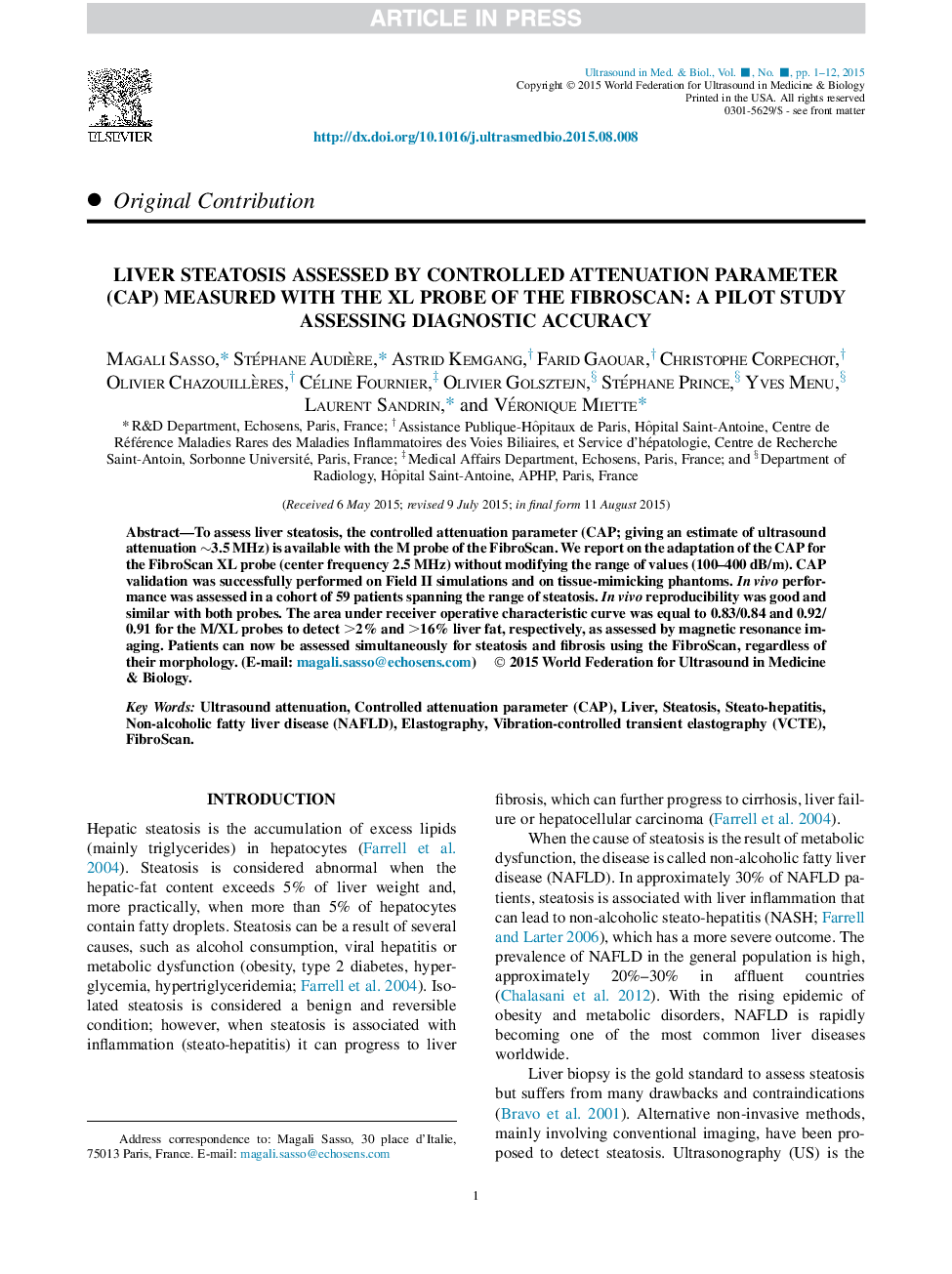| Article ID | Journal | Published Year | Pages | File Type |
|---|---|---|---|---|
| 10691086 | Ultrasound in Medicine & Biology | 2016 | 12 Pages |
Abstract
To assess liver steatosis, the controlled attenuation parameter (CAP; giving an estimate of ultrasound attenuation â¼3.5 MHz) is available with the M probe of the FibroScan. We report on the adaptation of the CAP for the FibroScan XL probe (center frequency 2.5 MHz) without modifying the range of values (100-400 dB/m). CAP validation was successfully performed on Field II simulations and on tissue-mimicking phantoms. In vivo performance was assessed in a cohort of 59 patients spanning the range of steatosis. In vivo reproducibility was good and similar with both probes. The area under receiver operative characteristic curve was equal to 0.83/0.84 and 0.92/0.91 for the M/XL probes to detect >2% and >16% liver fat, respectively, as assessed by magnetic resonance imaging. Patients can now be assessed simultaneously for steatosis and fibrosis using the FibroScan, regardless of their morphology.
Keywords
Related Topics
Physical Sciences and Engineering
Physics and Astronomy
Acoustics and Ultrasonics
Authors
Magali Sasso, Stéphane Audière, Astrid Kemgang, Farid Gaouar, Christophe Corpechot, Olivier Chazouillères, Céline Fournier, Olivier Golsztejn, Stéphane Prince, Yves Menu, Laurent Sandrin, Véronique Miette,
